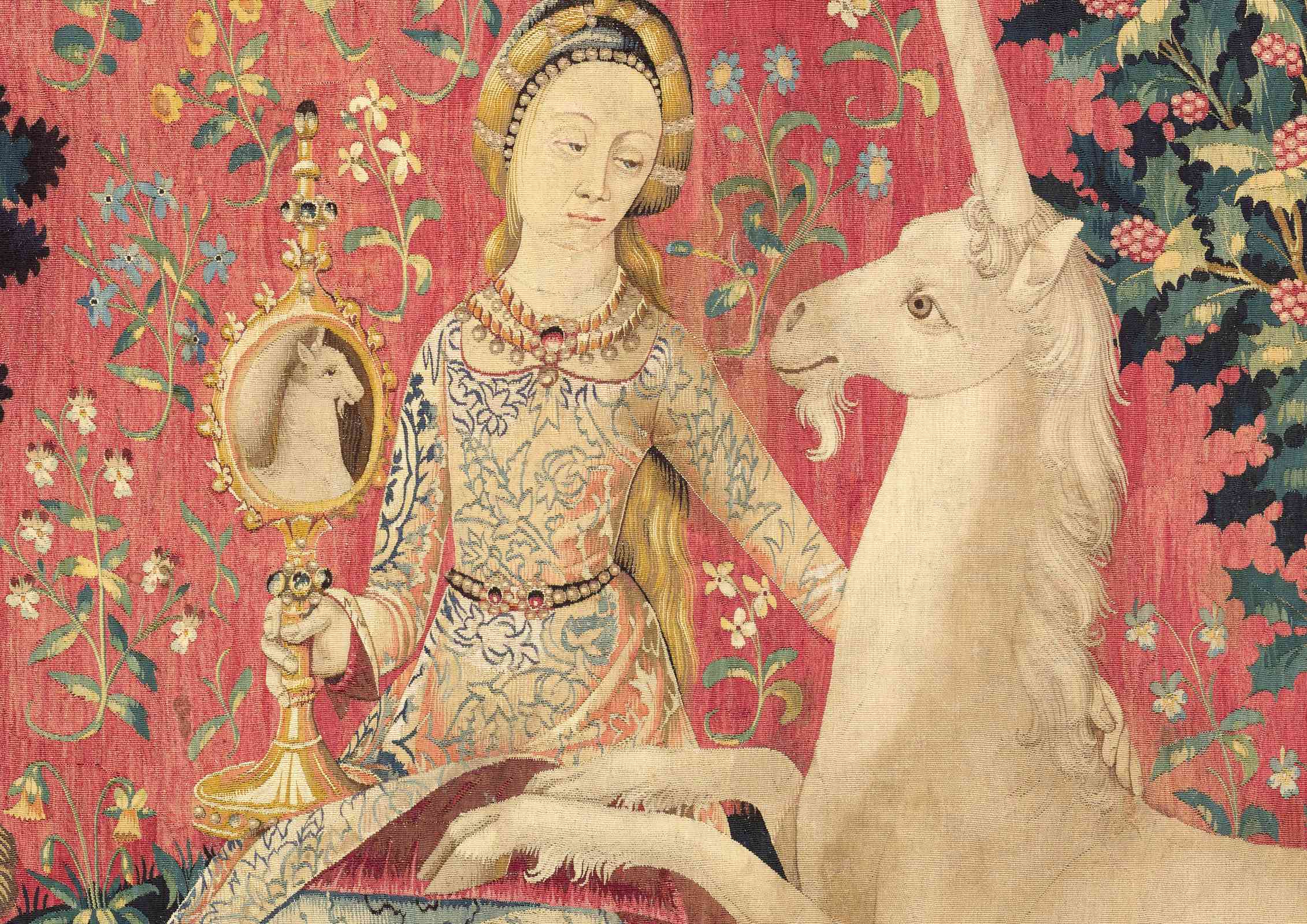
Explainer the symbolism of The Lady and the Unicorn tapestry cycle
The Lady and the Unicorn tapestries, housed at the Musée de Cluny in Paris, are a series of six exquisite medieval tapestries that are renowned for their beauty, craftsmanship, and mysterious symbolism. These tapestries are believed to have been created around the year 1500 and are considered masterpieces of medieval art.
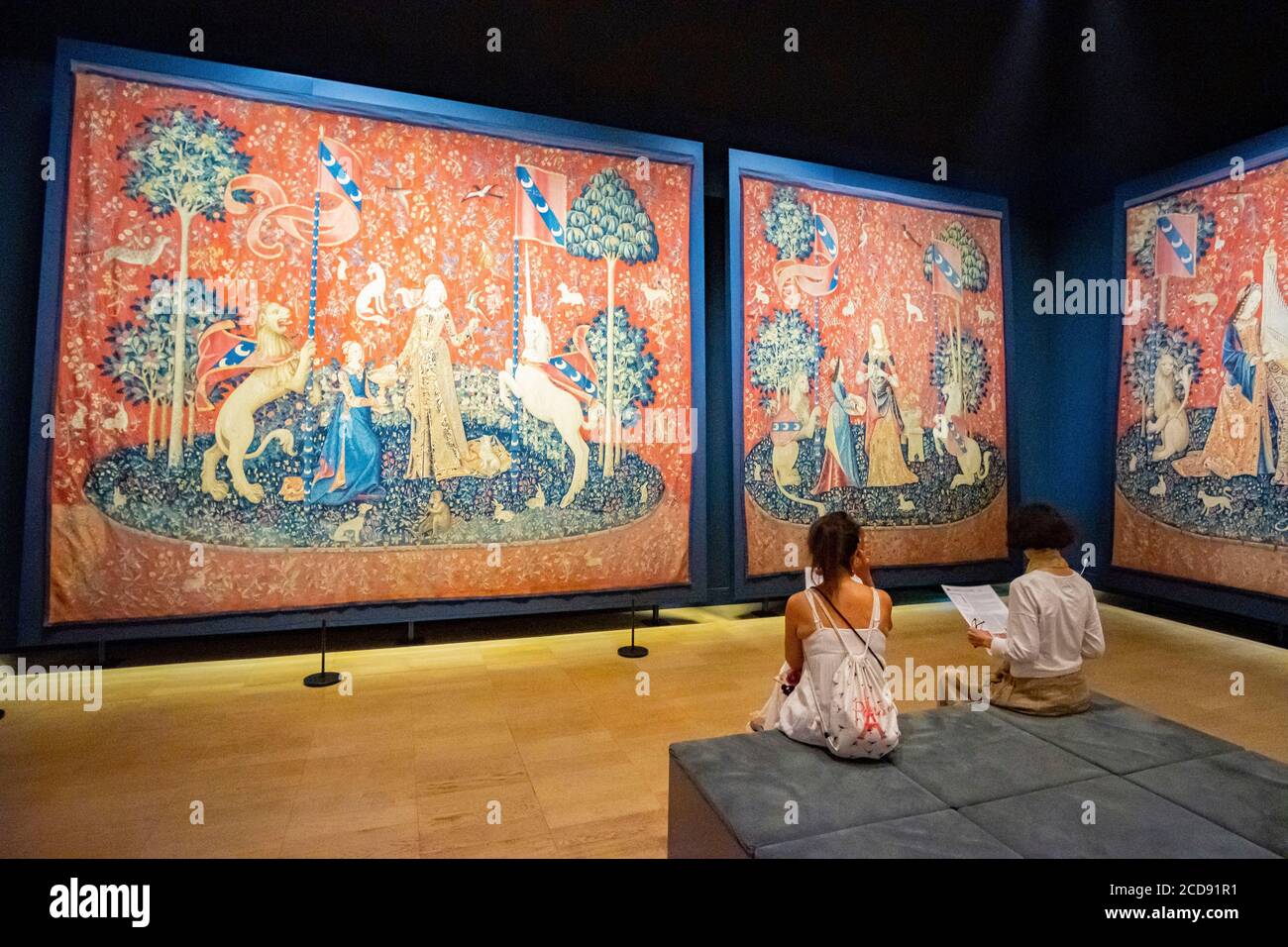
France, Paris, National museum of the Middle AgesCluny museum, tapestries of the Lady with the
The Lady with the Unicorn tapestries celebrate a world in which unicorns—no less than lions, bunny rabbits, or refined ladies—surely exist. Barbara Drake Boehm, curator emerita of the Met Cloisters, leads a virtual visit to the Cluny Museum to explore the exceptionally rich imagery, the history—real and imagined—and meaning behind these charming early 16th-century masterpieces.
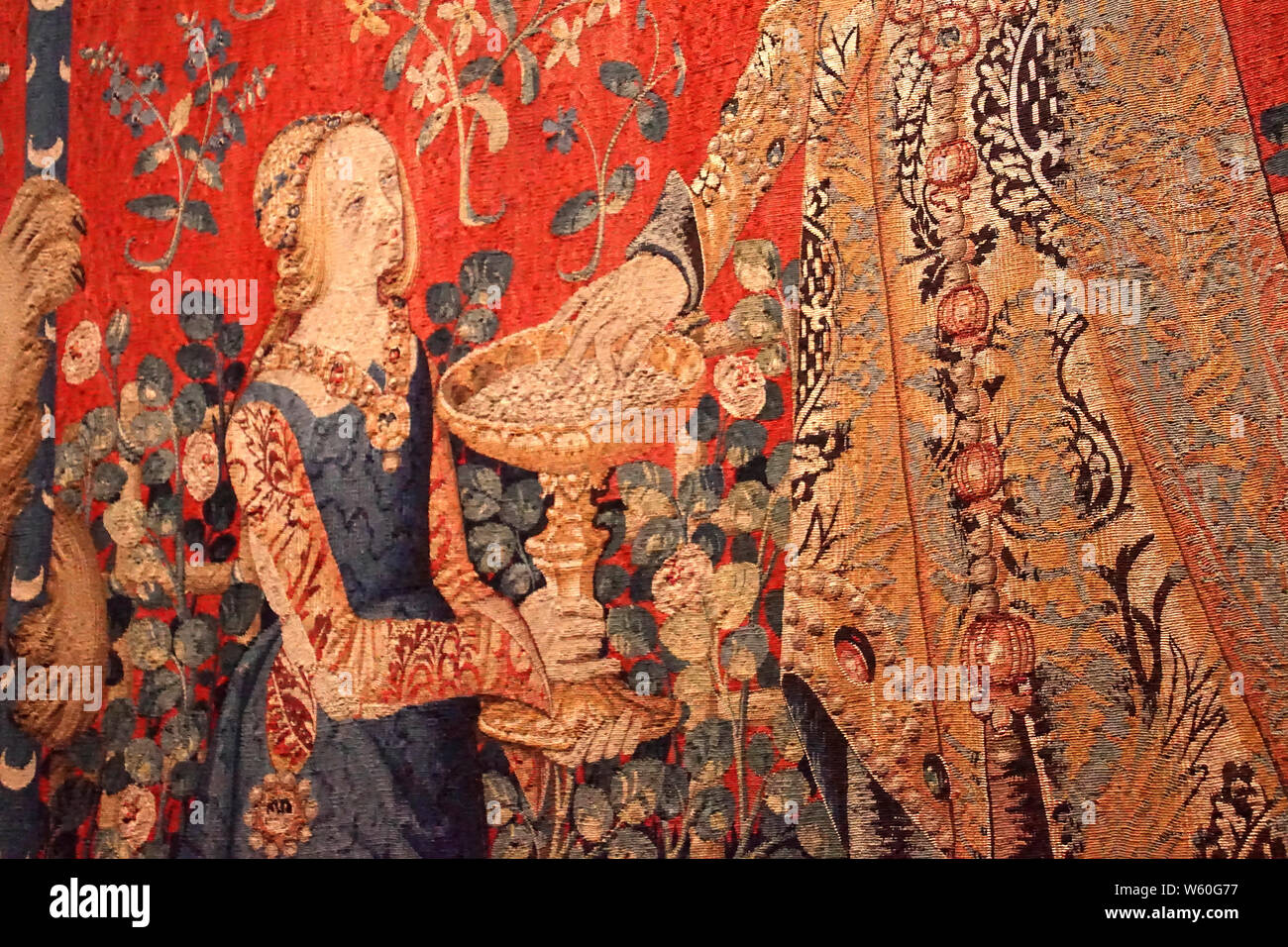
PARIS DEC 7, 2018 Lady and the Unicorn tapestry in the Cluny Museum de Moyen Age, Paris
The Lady and The Unicorn Tapestries on display at the Cluny Museum in Paris France In 2017 the tapestries, once again can be seen in all their vibrancy and detail after a major cleaning and restoration. Two years ago, in 2015, the tapestries were taken down from display at the Musée National du Moyen Age in Paris, where they had been since 1882.

The Lady and the Unicorn Musee Cluny treasures, Art Gallery of NSW
Musée de Cluny Musée national du Moyen Âge . Museum entrance on 28 rue Du Sommerard, 75005 Paris. Administrative address: 6 place Paul Painlevé, 75005 Paris. Tel: +33 (0)1 53 73 01 73 - +33 (0)1 53 73 78 16. Email : contact.musee-moyenage [at] culture.gouv.fr . Sign up to the newsletter.

The History Girls The Enigma of the Lady and the Unicorn
The Lady and the Unicorn ( French: La Dame à la licorne) is the modern title given to a series of six tapestries created in the style of mille-fleurs ("thousand flowers") and woven in Flanders from wool and silk, from designs ("cartoons") drawn in Paris around 1500. [1] The set is on display in the Musée de Cluny in Paris .
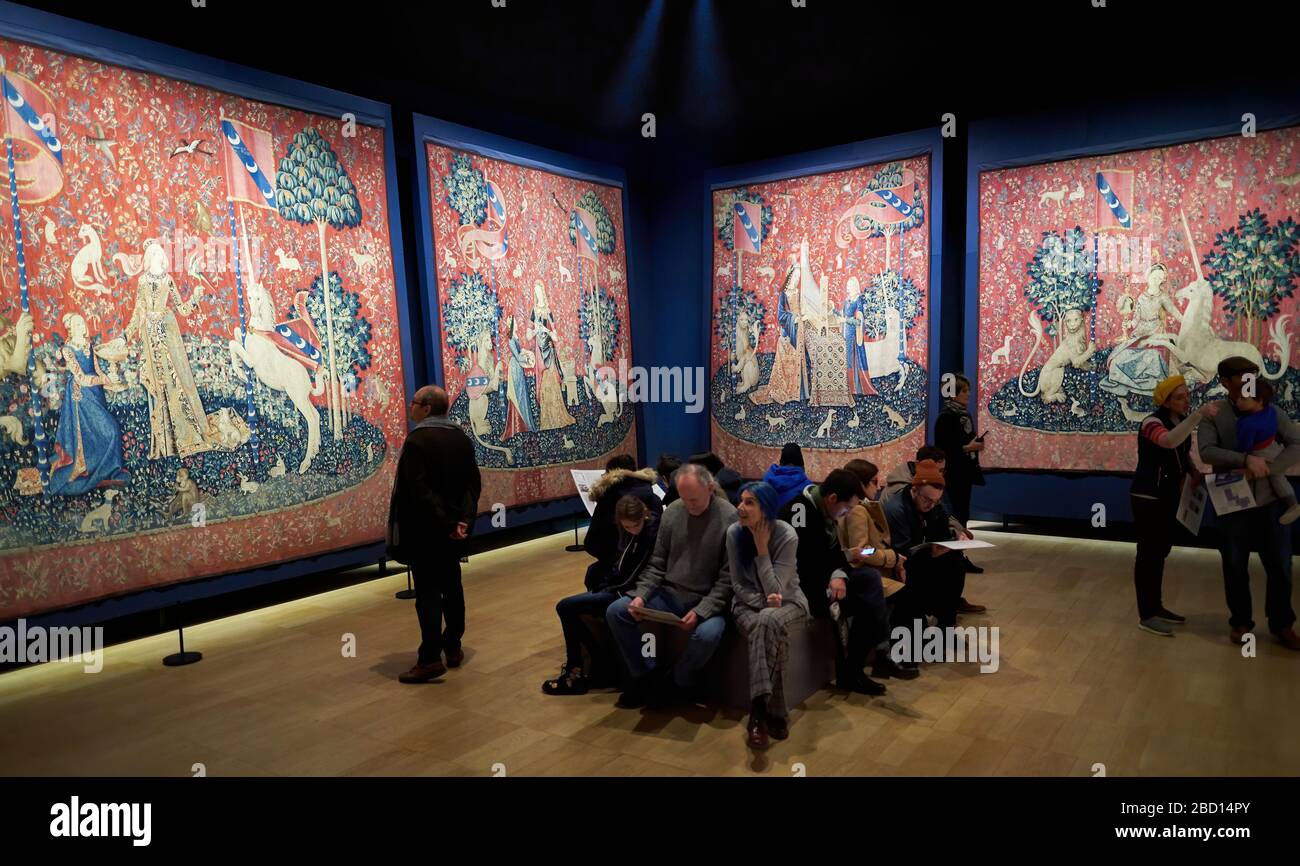
Visitors admiring The Lady and the Unicorn tapestries under extremely dim lighting in Cluny
The Lady and the Unicorn are six tapestries depicting a medieval lady in various poses. Each scene depicts one of the five senses; the sixth scene is labelled À Mon Seul Désir ("to my only desire") whose meaning is unclear.
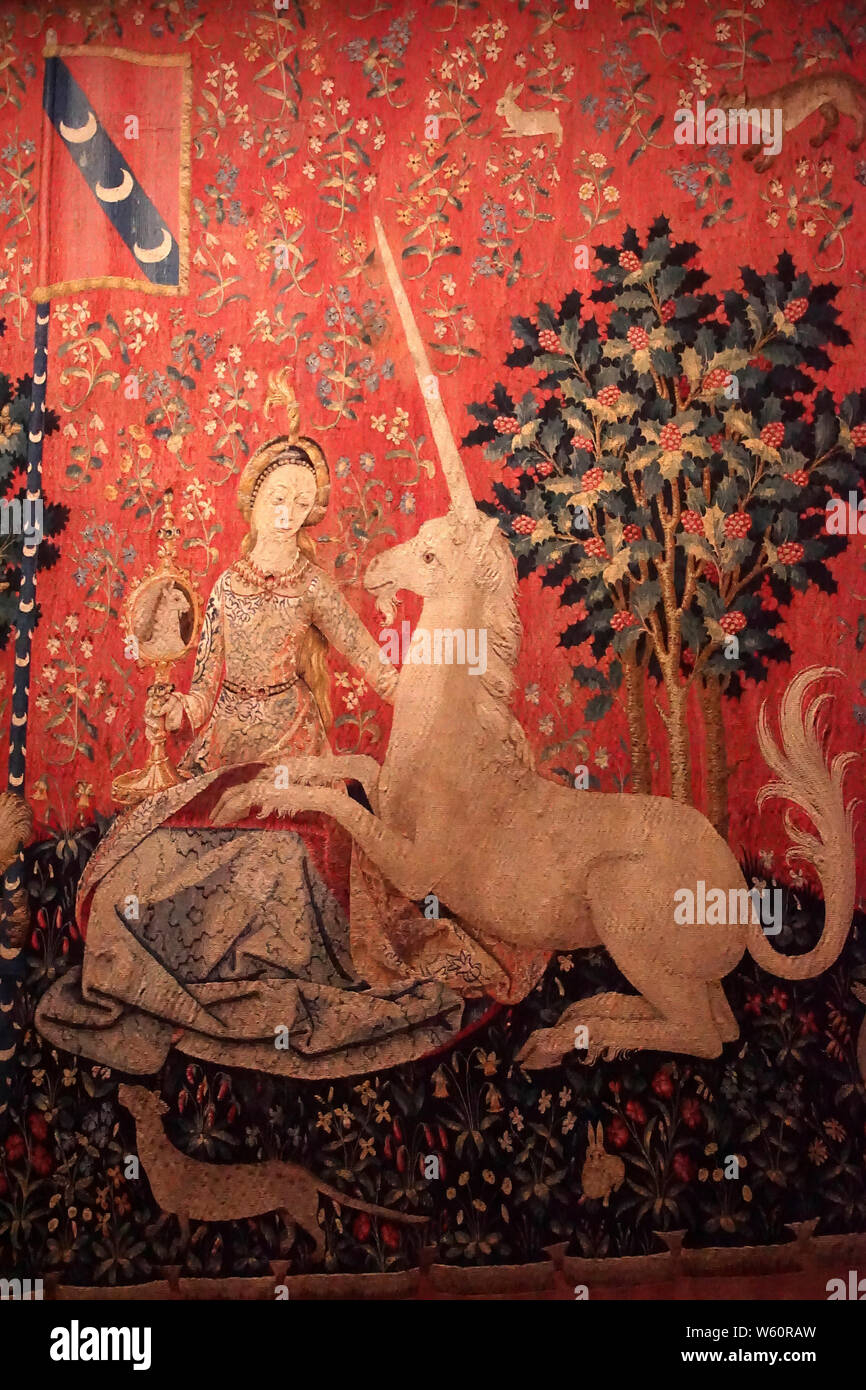
PARIS DEC 7, 2018 Lady and the Unicorn tapestry in the Cluny Museum de Moyen Age, Paris
The Louvre has its Mona Lisa, and the Cluny Museum, its Lady and the Unicorn. Yet with no known signature or place of fabrication, these six impressive tapes.

La Dame à la licorne (The Lady and the Unicorn) at la Musée de Cluny Paris, France One of a
Technique: tapestry Touch, taste, smell, hearing and sight. These six tapestries, woven in around 1500, represent the five senses against a detailed red background.
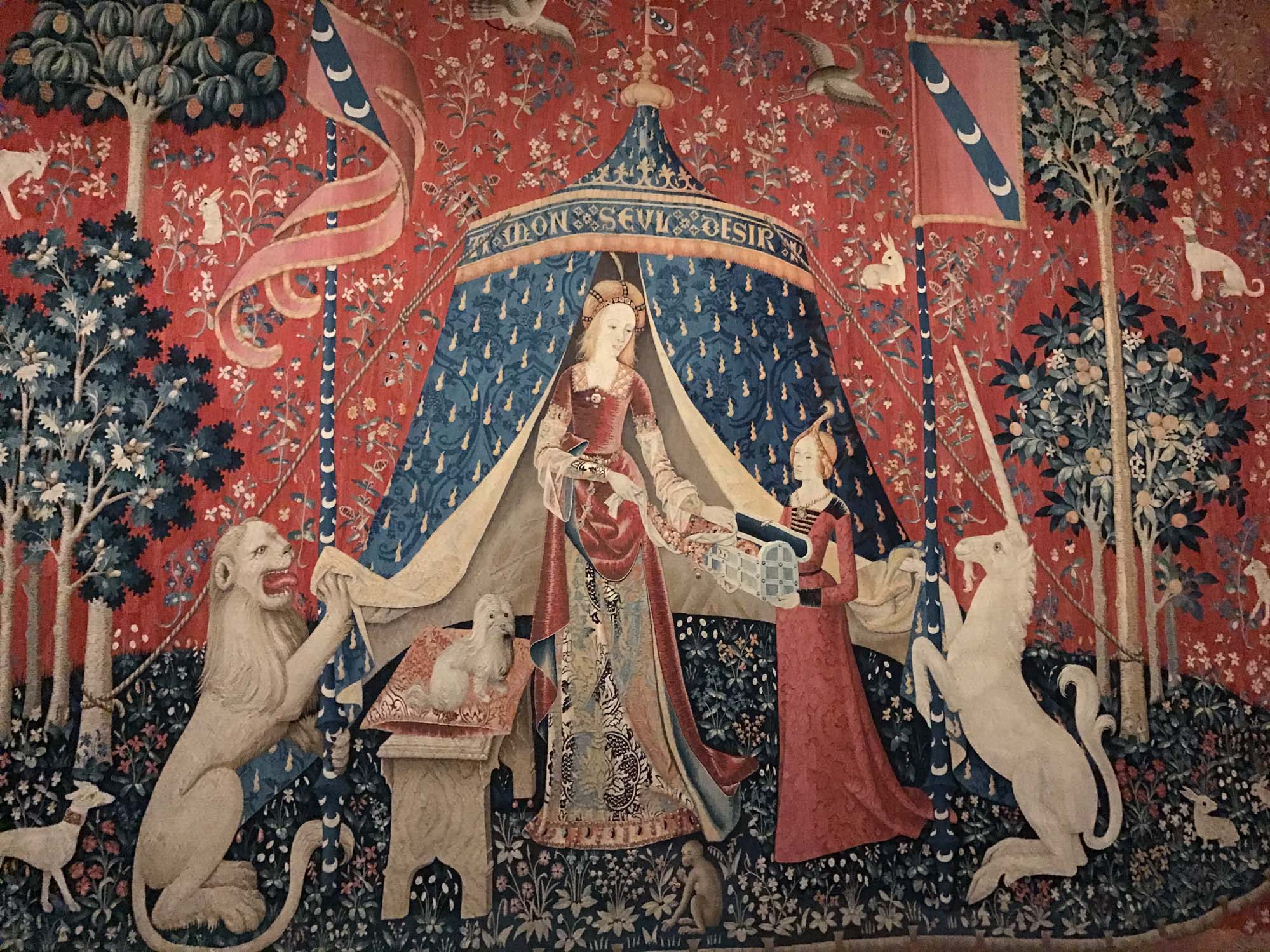
Tudor Times 14. The Lady and the Unicorn Tapestries
Wild woman with a unicorn, wool tapestry with silk and gold threads, circa 1500-1510 Inv. 1926.40. To celebrate reopening after four months of renovation work, the Musée de Cluny in Paris turns the spotlight on a legendary animal with an enchanting exhibition based on the famous tapestry of the Lady with the Unicorn, supported by medieval and.
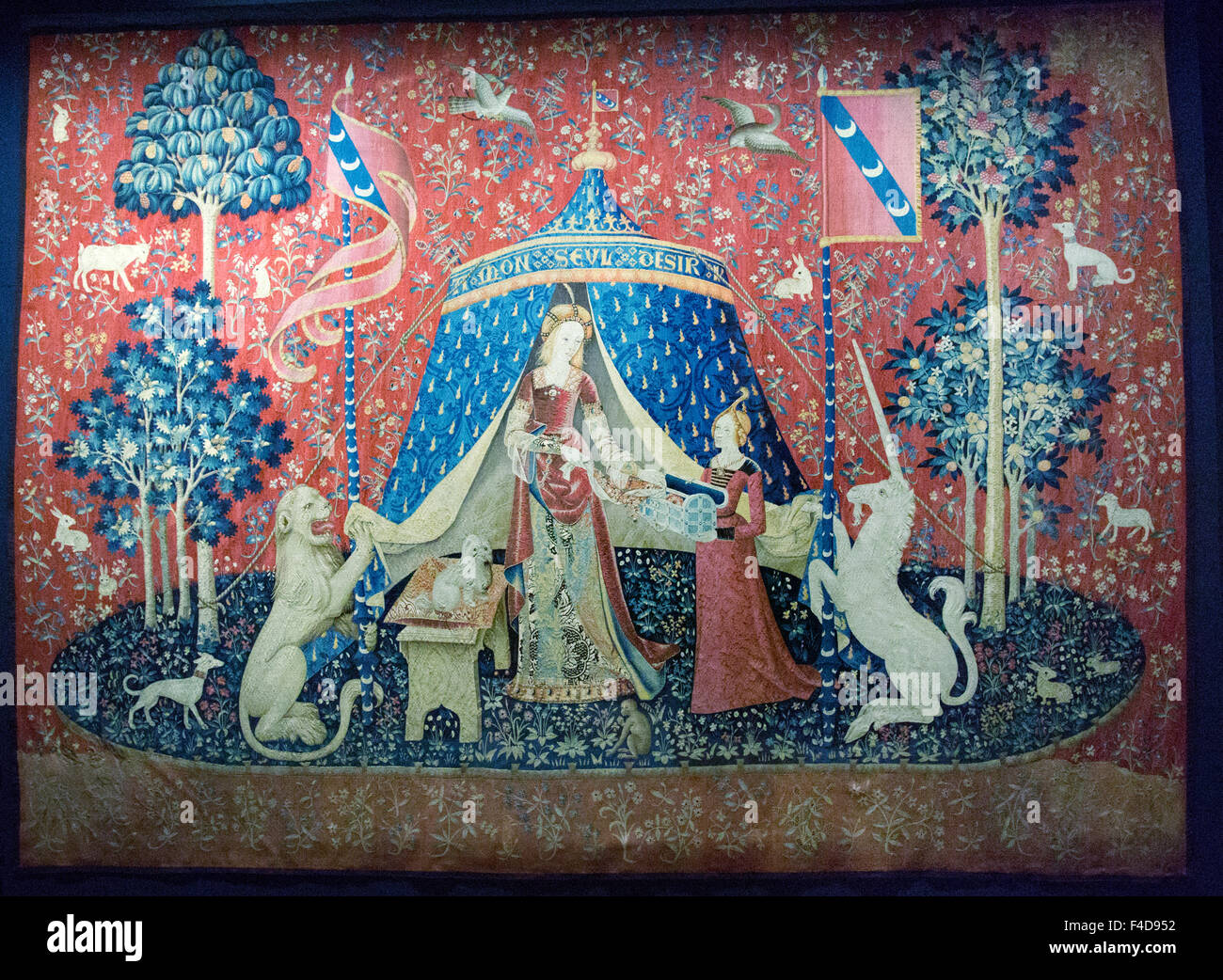
Europe, France, Paris. Number 6 of the six Lady and the Unicorn tapestries in the Cluny Museum
The Lady and the Unicorn tapestries, in 2005 with display dating from 1992 The Hôtel de Cluny is a rare extant example of the civic architecture of medieval Paris, erected in the late 15th century to replace an earlier structure built by Pierre de Chaslus after the Cluny Abbey acquired the ancient Roman baths in 1340. [2]

The “Lady and the Unicorn” tapestry at the Cluny Museum in Paris (credit for… Favorite City
The Lady and the Unicorn. One of the most well-known displays at the Cluny Museum are the six tapestries of The Lady and the Unicorn (La Dame à la licorne). The tapestries were created in the style of mille-fleurs ("thousand flowers") and were woven in Flanders from wool and silk around 1500AD.
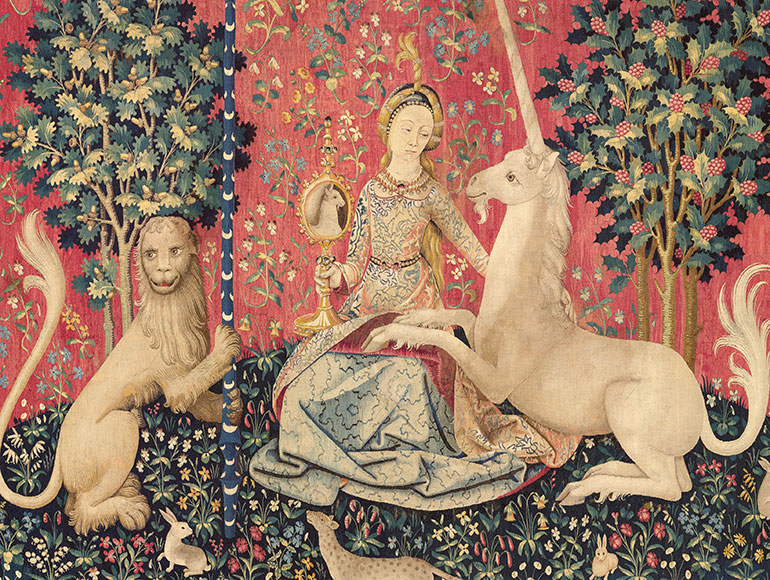
The Lady and the Unicorn
"The Lady and the Unicorn" is regarded as the Mona Lisa of woven artworks. Its reputation is due to its symbolism, history, and mystery. The tapestry's meaning is obscure but has been understood to represent "love or understanding."
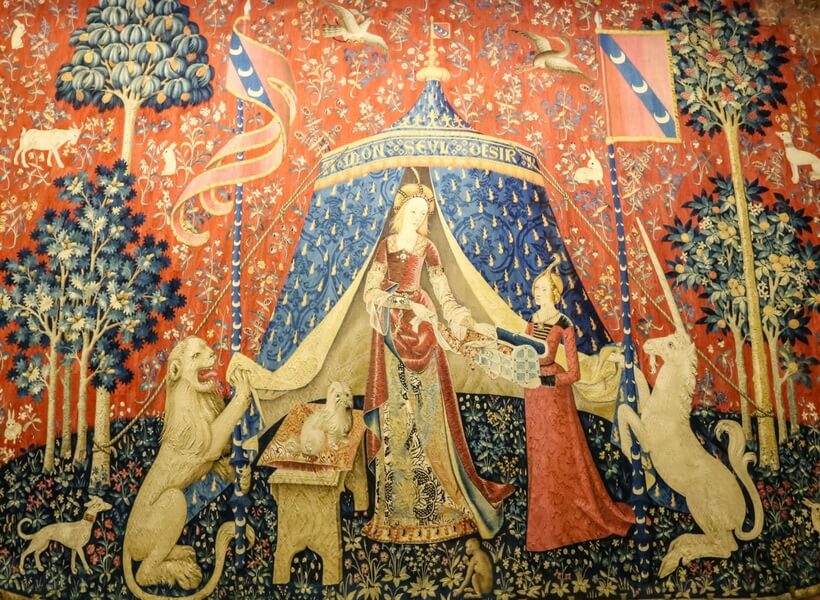
Ready for a Walk into the Distant Past? to the Cluny Museum in Paris!
The "Lady and the Unicorn" tapestry at the Cluny Museum in Paris. Photo by Atlant CC By 2.5 The museum houses a wide array of extraordinary medieval artifacts, including stained glass, furniture, sculptures and manuscripts. But its best-known items are the tapestries.
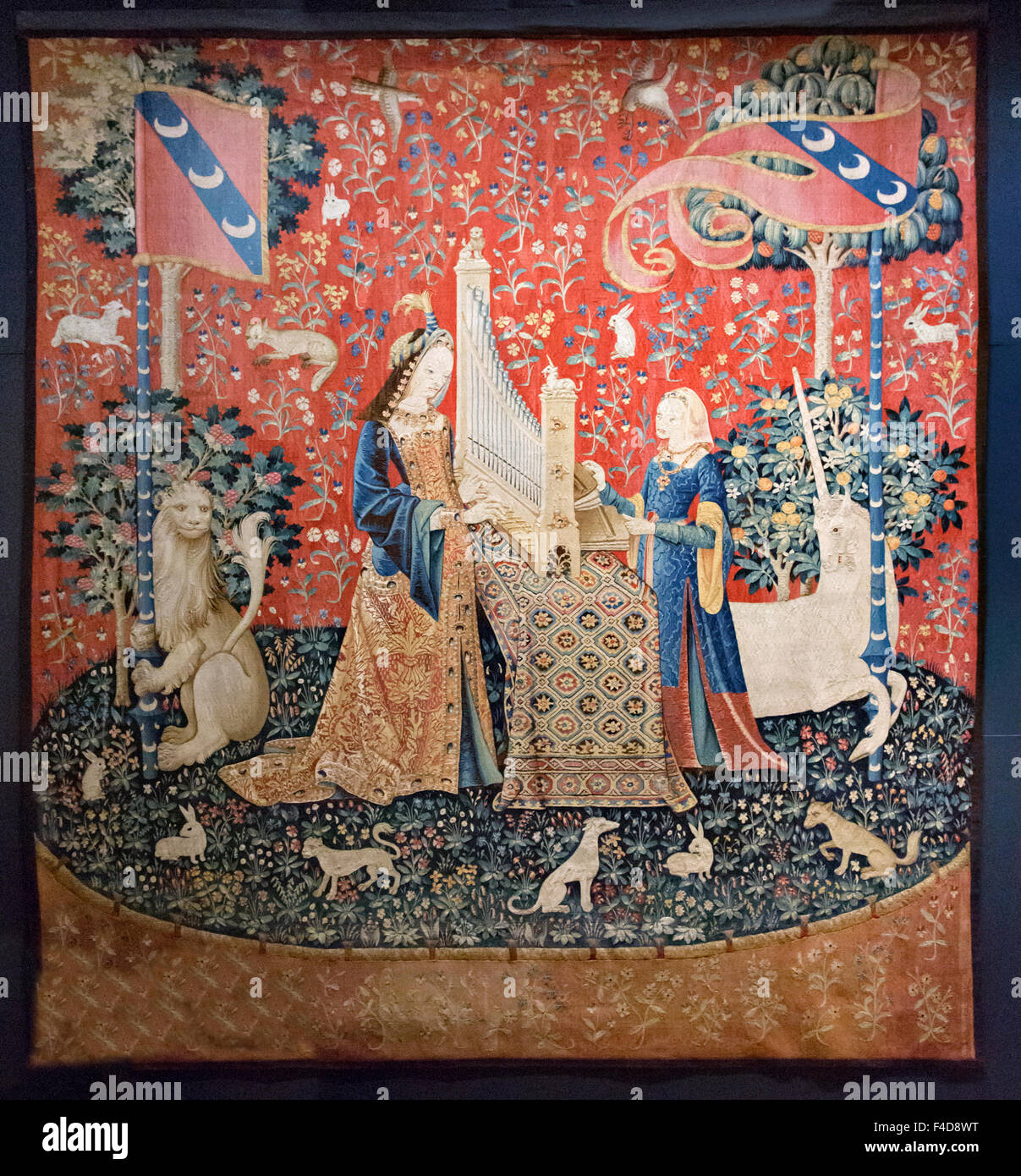
Europe, France, Paris. One of the six Lady and the Unicorn tapestries in the Cluny Museum of the
The Lady and the Unicorn is the mysterious and must-see masterpiece at the Cluny Museum, in Paris. Little is known about these six impressive tapestries, apart from the fact that significant colour differences can be observed in the weaving. With cutting-edge measuring devices that scan the wall hangings on-site, then at the Archaeoscience laboratory in Bordeaux (southwestern
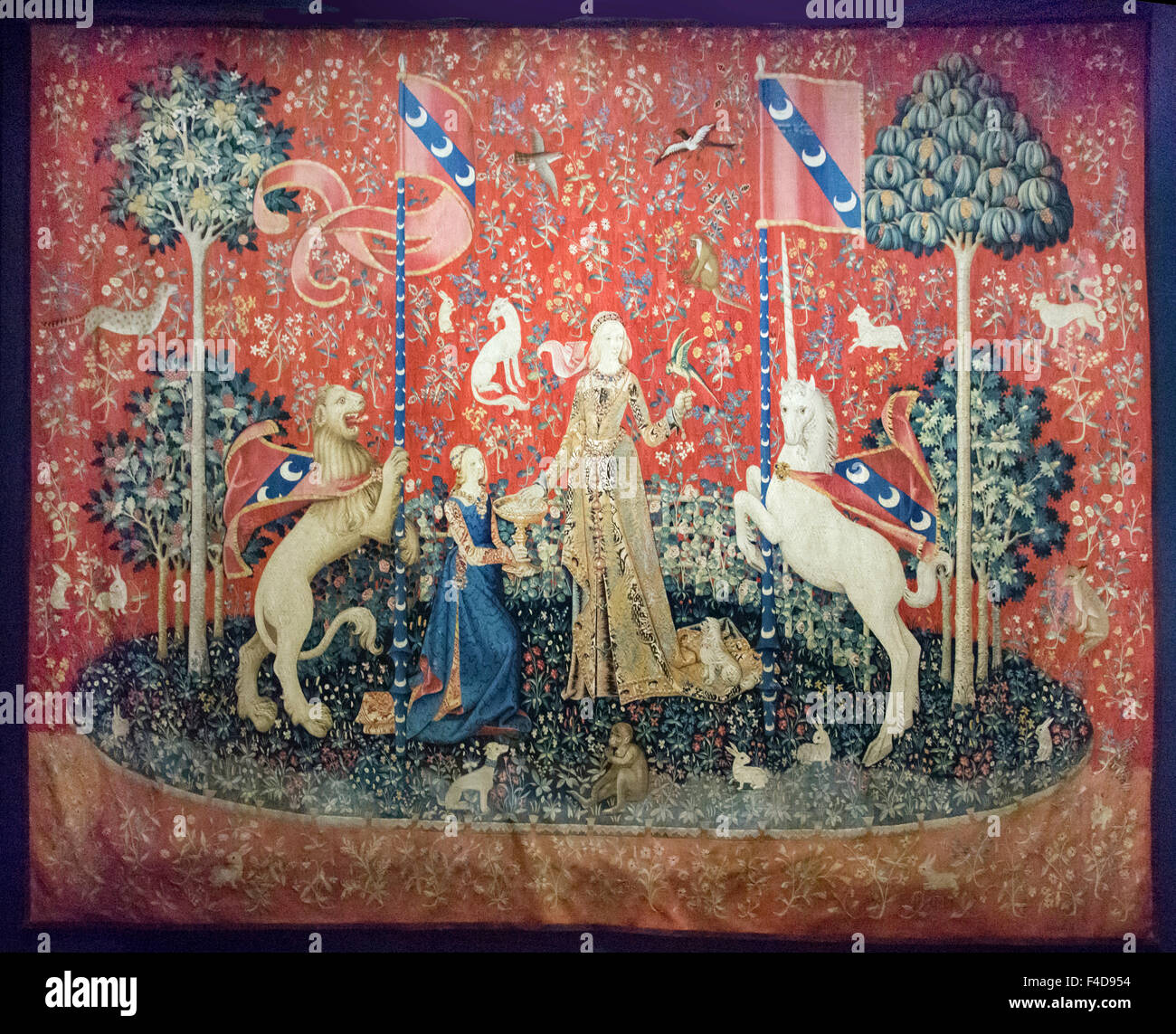
Europe, France, Paris. One of the six Lady and the Unicorn tapestries in the Cluny Museum of the
The highlight of the Cluny Museum is the 15th-century series of tapestries called The Lady and the Unicorn. Each piece celebrates one of the five senses. This fanciful, sensual work bids adieu to the Dark Ages and welcomes the humanistic Renaissance. keywords Art Gothic Medieval Middle Ages France YEAR PRODUCED 2011 CATALOG NUMBER 707.1

Europe, France, Paris. One of the six Lady and the Unicorn tapestries in the Cluny Museum of the
The museum holds one of the world's most important collections of medieval art and objects. Among its treasures are the famous Lady of the Unicorn tapestries, the heads of the Kings of Judah from Notre Dame Cathedral, and stained glass windows from Sainte-Chapelle. Cluny Museum History and Overview of the Museum